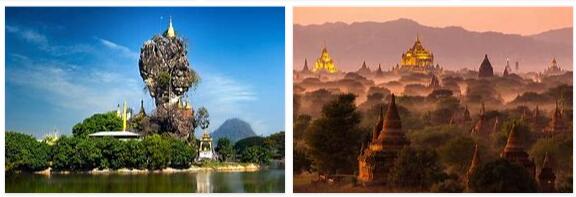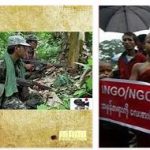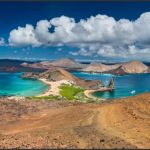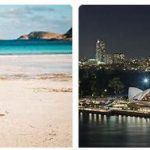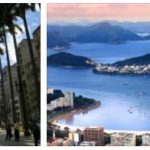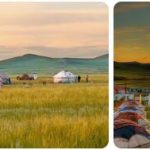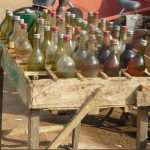People and oxen wade around in mud up to their knees on the green rice fields. Thick bamboo trunks flow quietly down the Pegu River. Dressed elephants drag heavy tree trunks from teak and rubber plantations, and Buddhist monks in burgundy-red robes walk the streets with empty food bowls that the people reverently fill with rice. We have come to Burma (Myanmar), the great South Asian country which, for better or worse, has managed to remain fairly isolated from the rest of the world.
Population: 56.8 million
Capital: Naypyidaw
Language: Burmese
- The Burmese are extremely superstitious and it is said that one should not cut his hair on Fridays, Mondays or on his birthday.
- many Burmese lubricate their faces with a white-yellow powder made of sandalwood? The powder acts both as protection against the sun’s strong rays, but is also a kind of cosmetic.
Burma’s wildlife and climate
The terrain in Burma consists of strips of mountain ranges separated by fertile river plains in both the north and the south. The largest and most densely populated plain belongs to the river Irrawaddy, and here tobacco, peanuts, sugar cane, cotton and above all rice are grown. Burma is the world’s largest exporter of rice. Large parts of the country’s mountain slopes are covered with teak plantations and large forests with oak and rhododendron trees. To the south, towards the elongated stretch of coast, the vegetation turns into a jungle where tigers, leopards and gibbon monkeys live. To the north live wild buffalo, rhinos and wild boar. The climate is tropical with a lot of monsoon rain in the western parts, while the central and eastern parts are generally drier. It is warmest in April, with about 30 degrees, after which the monsoon rains begin to turn the small streams in the mountains into rushing rivers,
History of Burma
The majority of Burma’s inhabitants belong to the world’s oldest branch of Buddhism, Theravada Buddhism. There are still naturalists who worship traditional nature religions and spirits. Almost all Burmese believe in astrology in parallel with Buddhism, believing everything the highly respected astrologers say. Many political decisions have changed or been removed over time following a statement by an astrologer. Burma was formerly divided into a series of warring states and principalities. The country belonged to British India and became independent in 1948.
This was followed by a brief period of democracy and then the military junta took power in 1962. The junta has managed to stay in power, among other things, by keeping Nobel laureate and leader of the opposition NLD party, Aung San Suu Kyi, under house arrest for 15 years. In 1989, the military junta also changed the country’s name from Burma to Myanmar.
In November 2015, Aung San Suu Kyi and the NLD became the clear winners of Burma’s first relatively free elections in 25 years. But unfortunately, part of the population was denied the right to vote, including a number of Muslim minorities. The country’s highly respected Buddhist monks have been at the forefront of popular uprisings several times, including during independence in 1948 and most recently during protests against the military junta, which began in August 2007.
Traveling in Burma
A trip to Burma has a lot to offer. Do as the locals do and bring a food basket to the Shwedagon Pagoda in Rangoon, with its gilded roof and large dragon sculptures. Be amazed by the tranquility and magical atmosphere of the ancient ruined city of Bagan with over 2000 temples, pagodas and cliffs scattered across the landscape. Continue to marvel at Kyaiktiyo or the “Golden Rock” which is one of the country’s holiest Buddhist monuments. Here is a rather small pagoda on a huge stone wrapped in gold. The stone balances on top of the cliff and looks as if it would fall down at any moment. Those who like exotic markets and bag finds should head to the ancient capital Mandalay, or the city of Tachilek towards the border with Thailand. If you want a journey in the spirit of nature and indigenous peoples, there are good opportunities for this as well. Burma has many beautiful hiking trails that lead the hiker through mountains, coniferous forests, plantations and villages inhabited by indigenous peoples such as the Padaung ethnic group. The women are known for having their necks wrapped in a number of tight-fitting brass rings, which make them look longer and thinner. In the Shan Mountains, on the border with China, lies the idyllic lake Inle. Along the shores of the lake and on its 17 islands live the Intha people, who for millennia have subsisted on fishing in the picturesque lake. Visit cellphoneexplorer for Burma River Cruise Upper Irrawaddy And Chindwin.
Climate and weather Burma
Here you can read about Burma’s climate and weather – see, among other things, temperatures for Yangon in the south and Mandalay in central Burma.
| JAN | FEB | MAR | APR | MAY | JUN | CHRISTMAS | AUG | SEP | OCT | NOV | DEC | |
| Yangon | ||||||||||||
| Daytime temperature | 32 | 35 | 36 | 37 | 33 | 30 | 30 | 30 | 30 | 32 | 32 | 32 |
| Night temperature | 18 | 19 | 22 | 24 | 25 | 25 | 24 | 24 | 24 | 24 | 22 | 19 |
| Precipitation (mm) | 5 | 2 | 7 | 15 | 303 | 547 | 559 | 602 | 368 | 206 | 60 | 7 |
| Mandalay | ||||||||||||
| Daytime temperature | 29 | 32 | 36 | 38 | 37 | 34 | 34 | 32 | 33 | 32 | 30 | 28 |
| Night temperature | 13 | 15 | 20 | 24 | 26 | 26 | 26 | 25 | 25 | 24 | 19 | 15 |
| Precipitation (mm) | 4 | 3 | 1 | 40 | 138 | 116 | 83 | 136 | 150 | 125 | 38 | 6 |
Burma’s nature consists of mountain ranges to the north-south mixed with fertile river plains. The largest and most densely populated plain belongs to the river Irrawaddy and here tobacco, peanuts, sugar cane, cotton and above all rice are grown. Burma is the world’s largest exporter of rice. Most of the country’s mountain slopes are covered with teak plantations and large forests with oak and rhododendron trees. South of the elongated coastline, the vegetation turns into a jungle where tigers, leopards and gibbon monkeys rule. In the north live wild buffalo, rhinos and wild boar. The climate is tropical with a rich proportion of monsoon rains in the western parts with drier climates in the eastern and central parts of the country. It is warmest in April (37 ° C) after which the monsoon rains begin to turn the small mountain streams into rushing rivers and the rice fields into evergreen pantries.
